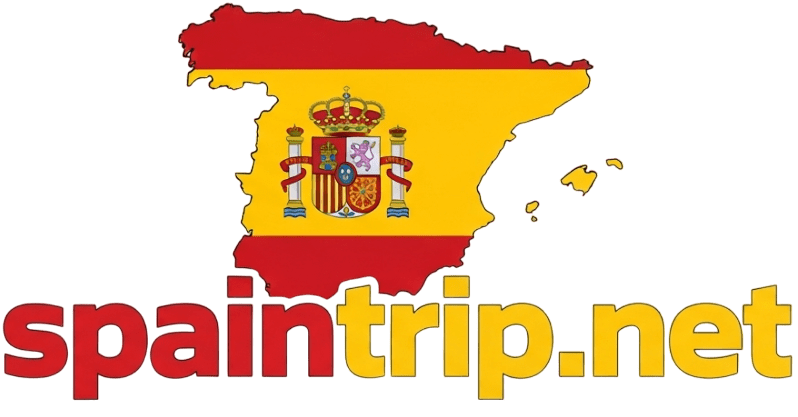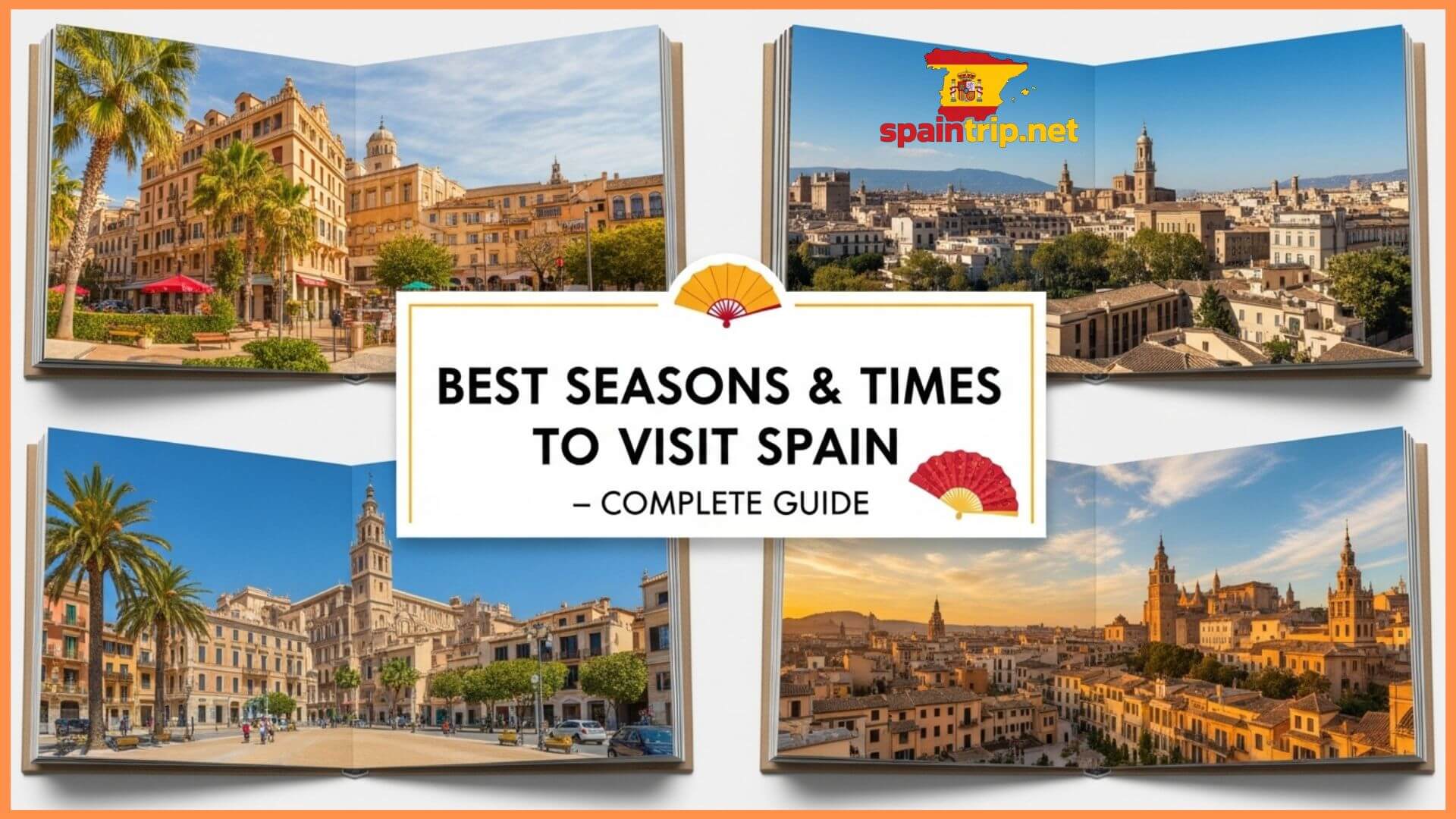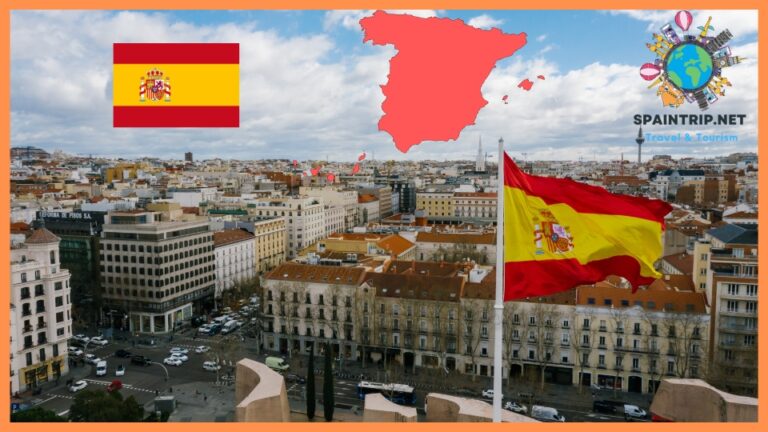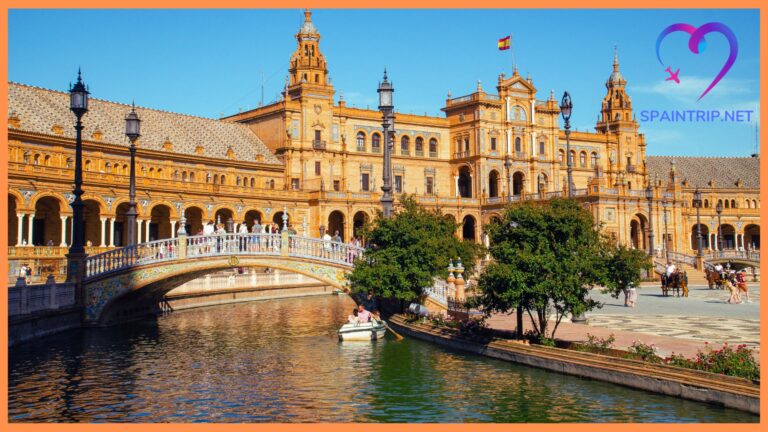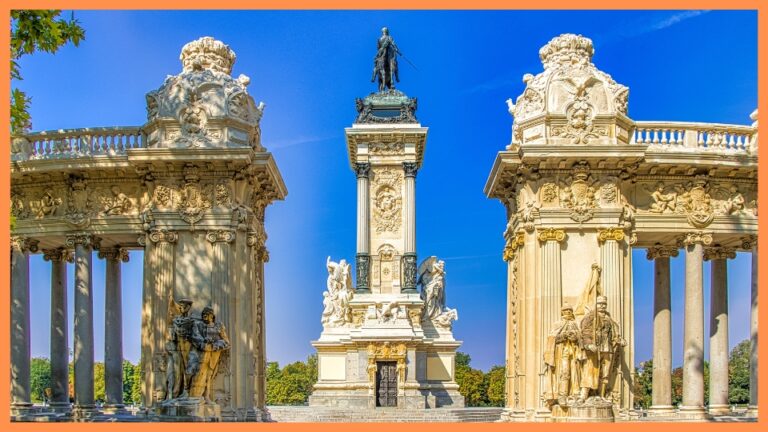Best Seasons & Times to Visit Spain – Complete Guide
Spain’s basically that friend who’s always doing something exciting—whether it’s throwing a street party, serving amazing food, or showing off jaw-dropping scenery. From sipping sangria in Seville to gawking at Gaudí in Barcelona to beach-bumming it in the Balearics, you’ll never be short on “Wow” moments here.
But… when you go really matters. The right timing can mean catching epic festivals, scoring perfect weather, dodging the tourist stampede, and not emptying your bank account on overpriced hotel rooms.
So, let’s break it down season by season, with a few insider tips to help you pick your perfect Spain window.
Quick & Dirty: Spain’s Weather by Season
- Spring (Mar–May): Flowers everywhere, great temps (15–22°C), and Easter celebrations. Crowds start to pick up—especially at Easter—but not summer-level crazy.
- Summer (Jun–Aug): HOT. Like, Seville could cook your breakfast on the pavement hot. Perfect for beaches, parties, and festivals. Crowds and prices are at their peak.
- Fall (Sep–Nov): Warm-but-not-roasting days (18–25°C), wine harvests, fewer people. Basically Spain’s sweet spot.
- Winter (Dec–Feb): Chilly up north, mild down south, and Canary Islands = instant summer vibes. Cheapest time to go unless you’re skiing or chasing holiday magic.
Spain’s Weather Personalities (Because It’s Basically Multiple Countries in One)
- North (Basque Country, Galicia): Cooler, rainier, but lush and green. Summers are sunny without frying you.
- Center (Madrid, Castile): Think extremes—scorching summers, freezing winters.
- South (Andalusia): Sunny almost all year. Summers can get too intense (hello, 40°C).
- East Coast (Valencia, Barcelona): Warm and breezy. Milder than the south thanks to the Mediterranean.
- Canary & Balearic Islands: Year-round beach weather. Basically cheating the seasons.
Spring in Spain (Mar–May): Festivals + Flowers = Happy Travelers
Spring in Spain feels like a reset button is pushed for the entire country. The wildflowers burst forth, the orange trees blossom, and the terraces start to fill up again with cheerful folks looking for a patch of sun.
- Why it’s great: Perfect sightseeing temps, gorgeous countryside, and big cultural events like Semana Santa in Seville (huge parades, dramatic music, candlelight—goosebumps guaranteed) and Las Fallas in Valencia (bonfires, fireworks, and giant sculptures they actually burn at the end).
- Good to know: Easter week = busy and pricier, and April showers are a thing. But that’s why everything looks so lush.
Top picks: Seville, Granada, Córdoba, Valencia, Madrid (especially May), and hiking spots like Picos de Europa before summer heat hits.
Summer in Spain (Jun–Aug): Sun, Sangria, and Crowds
Summer’s when Spain goes full throttle—beach clubs pumping until sunrise, festival season in full swing, and every coastal spot looking like a postcard.
- Why it’s great: Long days (sunset after 9 PM!), warm seas, party season in places like Ibiza, and festivals like San Fermín (yes, the running of the bulls) and La Tomatina (giant tomato fight—ridiculous but amazing).
- The flip side: Inland cities can feel like an oven, beaches get packed, and prices spike.
Pro tip: Do sightseeing early, take an afternoon siesta (trust me, it’s survival, not laziness), then head back out in the evening when it’s cooler.
Fall in Spain (Sep–Nov): The Underrated Gem
This is when seasoned travelers give each other a knowing nod—warm days, fewer tourists, and vineyards glowing gold during harvest season.
- Why it’s great: Weather is perfect for exploring, beach season lingers into September, and wine regions like La Rioja throw harvest parties where you can stomp grapes and drink the results.
- Crowd levels: Manageable, which means you can actually enjoy the Alhambra without 10 tour groups blocking your view.
Best bets: Barcelona (minus summer madness), Granada (cue the backdrop of snow capped Sierra Nevada), Madrid (season of culture running hot).
Winter in Spain (Dec–Feb): Sunshine or Snow—Pick Your Poison
Winter is where Spain shows off its range. Want snow? Head to the Pyrenees or Sierra Nevada. Want sun? Fly to the Canary Islands and pretend it’s July.
- Why it’s great: Cheapest time to visit (except ski resorts), festive vibes with Christmas markets and Three Kings Day parades in January, and almost no lines at major attractions.
- Weather reality check: North = grey and rainy, Madrid = cold but sunny, South = light-jacket weather, Canaries = swimsuit weather.
Best Time for YOU
- For sightseeing & culture: Spring or fall. Avoid the summer oven.
- For beaches: Summer for the party scene, May/September for warm-but-chill vibes, Canaries anytime.
- For fiestas: March (Las Fallas), April (Semana Santa), July (San Fermín), August (La Tomatina).
- For food & wine: Fall for harvest, spring for fresh produce.
- For skiing: Dec–Feb in the Pyrenees or Sierra Nevada.
My Quick Travel Tips
- Book smart: Summer = 4–6 months in advance, Spring/Fall = 2–3 months, Winter = 1–2 months (except ski resorts & Canaries—book earlier).
- Pack for layers: Even in summer, evenings can surprise you.
- Respect the siesta: Businesses close mid-afternoon in summer. Use that time to rest or enjoy a very long lunch.
- Don’t just stick to one season: Spain changes so much throughout the year, you might want to come back just to see the contrast.
Bottom line—there’s no “wrong” time to visit Spain. It just depends if you want your trip to be about sunbathing, sightseeing, skiing, or stuffing your face with paella between festival parades.
